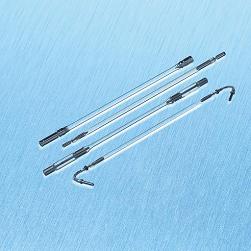Excel, Control Laser, Baublys, Quantronix Components and Consumables
TJS, Inc. carries a full line of all components and consumables so you can maintain the consistent...

Every minute your laser sits idle costs money. When you're responsible for keeping production running, the last thing you need is a parts supplier that adds uncertainty to an already stressful situation.
Finding the right laser parts supplier isn't just about price or availability. It's about finding a partner who understands that your success depends on minimizing downtime and maximizing equipment reliability. Whether you're maintaining a fleet of mixed-brand lasers or supporting legacy systems that have been running for decades, the wrong supplier choice can turn a routine maintenance task into a production nightmare.
Most maintenance managers have lived through the frustration of placing an "urgent" parts order only to receive the wrong component three days later. The original part cost might have been $500, but the real cost includes lost production time, expedited shipping for the correct part, and the overtime required to complete the repair during off-hours.
This scenario becomes even more complex when you're managing multiple laser systems from different manufacturers across various generations. A CO2 laser from 2010 doesn't use the same components as a fiber laser installed last year, but both need to stay operational.
The best parts suppliers understand that manufacturing facilities rarely standardize on a single laser brand or technology. Your shop might run a mix of older CO2 systems, newer fiber lasers, and everything in between. Each system represents a significant capital investment that needs ongoing support.
A supplier with broad inventory coverage eliminates the need to maintain relationships with multiple vendors. This consolidation reduces administrative overhead and gives you more leverage when negotiating terms. More importantly, it means one phone call instead of three when you need parts for different systems.
Look for suppliers who stock components across multiple laser generations from the same manufacturer. Laser manufacturers frequently update their designs, but that doesn't mean your 15-year-old system suddenly becomes disposable. A supplier with deep inventory in legacy components can keep older systems running while you plan for future equipment upgrades.
The difference between a parts dealer and a true partner becomes clear when something goes wrong. When you're troubleshooting a laser failure at 2 AM, you need more than someone who can look up part numbers in a catalog.
Suppliers with hands-on repair and manufacturing experience bring diagnostic capabilities that can save significant time and money. They can help you determine whether a failing component is the actual problem or just a symptom of a larger issue. This expertise prevents the costly mistake of replacing parts that aren't actually defective.
This technical knowledge also proves valuable during routine maintenance planning. An experienced supplier can recommend preventive maintenance schedules based on actual field experience, not just manufacturer recommendations. They understand how components fail in real-world conditions and can help you stock the right spare parts before you need them.
Production schedules don't accommodate equipment failures. When a laser goes down during a critical production run, standard shipping timelines become unacceptable. Your parts supplier needs to understand this reality and have systems in place to respond accordingly.
The most reliable suppliers maintain significant safety stock and have established relationships with expedited shipping services. They can commit to specific delivery timelines and follow through consistently. This reliability allows you to make realistic promises to production managers about when equipment will be back online.
Emergency support capability extends beyond just having parts in stock. The best suppliers staff their technical support teams to handle urgent calls outside normal business hours. When you're facing a weekend production run with a failed laser, you need immediate access to expertise, not a voicemail system.
While upfront part costs matter, total cost of ownership includes factors like inventory carrying costs, expedited shipping charges, and the hidden expenses of dealing with multiple suppliers. A reliable parts supplier can help reduce these indirect costs through better planning and execution.
Some suppliers offer programs that allow you to pre-position critical spare parts at your facility while maintaining their ownership until you actually use them. This approach reduces your inventory investment while ensuring immediate access to essential components.
Long-term partnerships with suppliers often yield better pricing and priority treatment during supply shortages. When allocation becomes necessary, suppliers typically take care of their most loyal customers first.
The right laser parts supplier becomes an extension of your maintenance team. They understand your equipment mix, know your typical failure patterns, and can anticipate your needs before you call. This relationship reduces the stress and uncertainty that comes with equipment maintenance responsibilities.
When evaluating potential suppliers, consider their ability to support your entire laser portfolio, not just your newest equipment. Ask about their technical support capabilities and emergency response procedures. Most importantly, talk to other maintenance managers who have worked with them during actual emergencies.
Your production targets depend on reliable equipment. Your equipment reliability depends on having the right parts when you need them. Choose a supplier who understands this connection and has built their business around supporting it.
The cost of finding the right supplier is measured in research time. The cost of choosing the wrong one is measured in lost production, frustrated operators, and explaining downtime to management. Take the time to find a partner who can keep your lasers running.
TJS, Inc. carries a full line of all components and consumables so you can maintain the consistent...
From flashlamps to repairs, finding a reputable supplier to help you maintain your laser system can...
Lasers and their applications can have very diverse uses. This "diversity" can often lead to...
Join the Conversation! Leave a comment below.